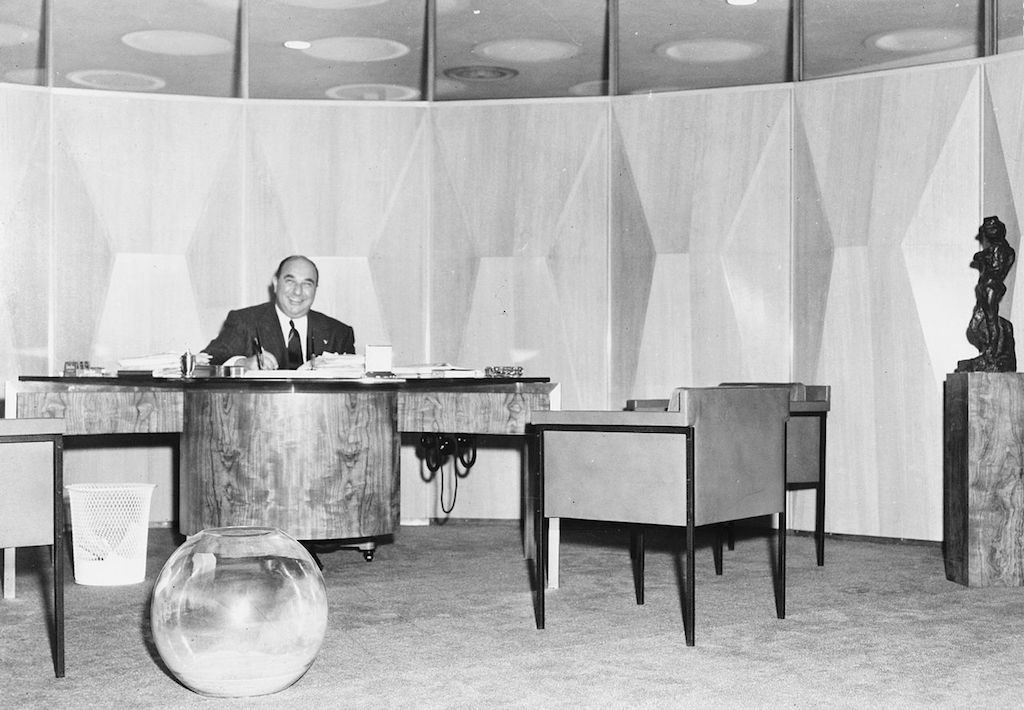
We are celebrating 15 years — and counting — of stories that are deeply researched and deeply felt, that build a historical record of what the city has been.
We are celebrating 15 years — and counting — of stories that are deeply researched and deeply felt, that build a historical record of what the city has been.
What makes developers tick? In Developing Expertise, architectural historian Sara Stevens revisits the careers of J. C. Nichols, Herbert Greenwald, and William Zeckendorf to detail how real estate development became a profession in the mid 20th century (it wasn’t before), and how developers positioned themselves as the saviors of US cities. These outsize figures cited a moral obligation to save downtowns. Working with Mies van der Rohe and I.M. Pei, respectively, Greenwald and Zeckendorf brought modernist architecture and suburban amenities to city centers in the 1950s and 1960s.
The postmodern towers built by Zeckendorf’s son have yet to capture the interest of architectural historians, but his effect on the New York cityscape was also significant. In his posthumously published autobiography, Developing: My Life, William Zeckendorf Jr. reconstructs his life as a real estate developer, deal by deal. Against the adverse forces of market slumps, construction delays, rent controlled tenants, and bankrupt contractors, properties are assembled, loans are secured, profits are made, and neighborhoods are changed. Over 22 years, Zeckendorf Jr. turned parking lots, derelict department stores, and pornographic theaters into condominiums and mixed-use developments. He anticipated and propelled redevelopment of such down-at-the-heels areas as the Upper West Side and Long Island City. Gentrification was not a dirty word for Zeckendorf Jr., who sought to make New York City, in his own words, “a safer, more comfortable, more aesthetically pleasing place to live.”
Second-generation developer Jonathan Rose touts a theory of The Well-Tempered City, which aligns “our highest human aspirations with the sublime harmony of nature,” or in more prosaic terms, promotes wellbeing for city dwellers in an uncertain and volatile age. Rose bases his five qualities of urban temperament on a mix of history and social science research. Refusing to delve into either biography or financing, Rose prefers the art of citymaking (which he models on the musical work of Johann Sebastian Bach) to the “art of the deal.” That, of course, is the title of the 1987 book that has been under renewed scrutiny in the run up to the inauguration of Donald Trump and his “winning temperament” as developer-in-chief on January 20th.
If the above are tales of real estate developers driven primarily by civic impulses, not everyone follows such a calling; take, for example, journalist David Cay Johnston’s portrait of Donald Trump as seeking “profit in everything, including politics.” The Making of Donald Trump illustrates Stevens’s claim that alongside architecture and economics, personality is currency in real estate development. In Trump’s case, this has extended to creating the illusion that he is the developer of projects to which he has merely licensed his name. Branding, instead of building. Like those of his developer father Fred, many of Trump’s deals are evidence of another of Stevens’s principal points — that developers use public aid and powers to manage their financial risk and ensure private profit. In that equation, serving the public good is a possibility, but it’s in no way guaranteed.
The views expressed here are those of the authors only and do not reflect the position of The Architectural League of New York.
